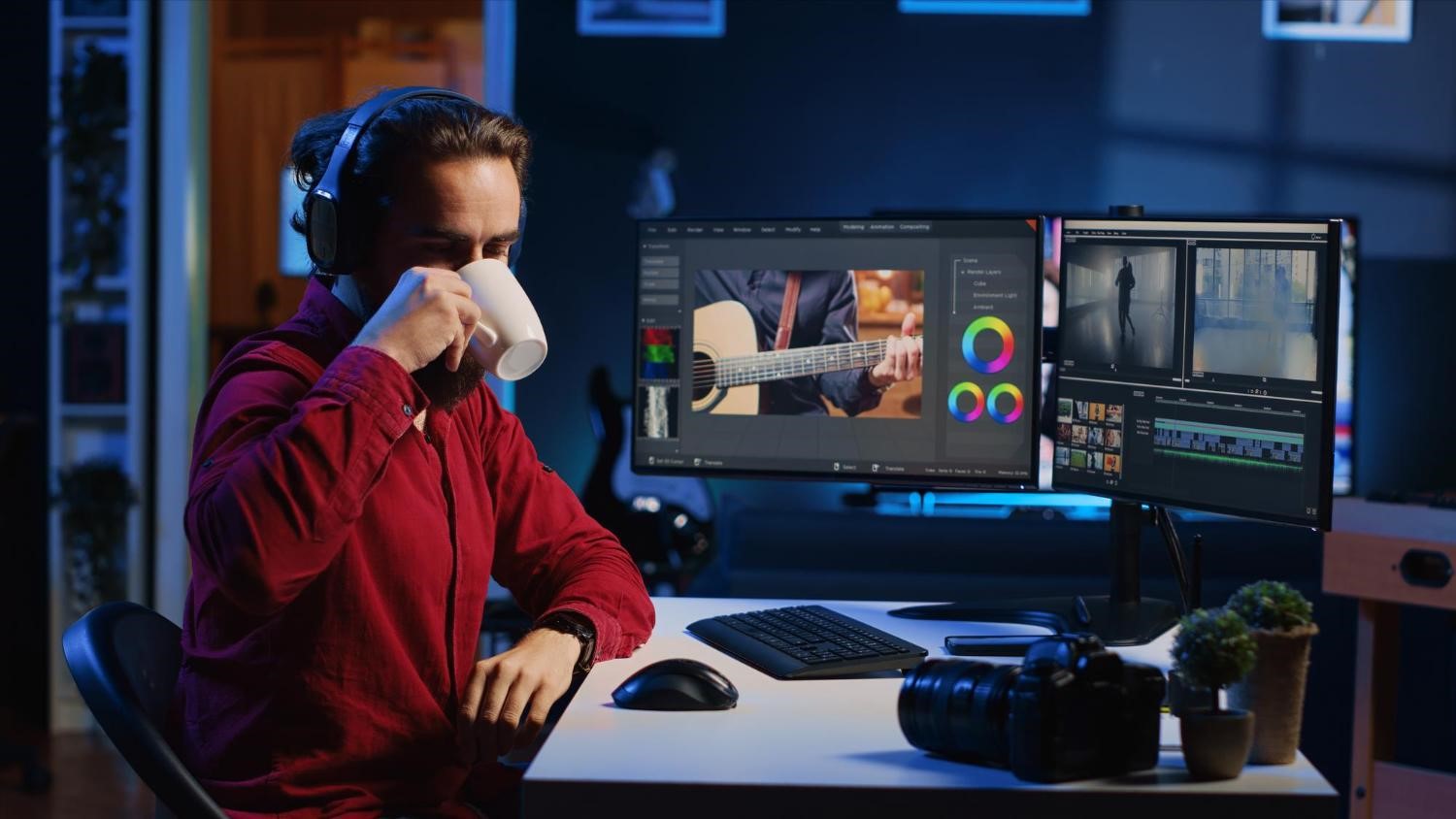Visual content reigns supreme. There is no such medium that brings that much impact. How to make videos that stand out? That’s truly the question, isn’t it?
You can always come up with great video concepts, but the real challenge is the video production and editing process. Even a 30-sec promo video can take hours to edit, depending on the complexity and person’s skill level.
Fortunately, video editing templates are available, which make cumbersome tasks turn into a one-click operation.
The unsung heroes of efficient video creation provide a pre-made structure for your video, eliminate creative roadblocks, and drastically reduce your caffeine intake during late-night editing sessions. But harnessing their full potential requires a pinch of know-how.
So buckle up as we delve into the art of utilizing video templates effectively, quickly, and (best of all) easily.
Why Embrace Video Editing Templates?
Templates aren’t merely shortcuts; they pave the way to better storytelling. When juggling tight deadlines and lofty expectations, templates provide a structure that makes video editing not only fast but creatively liberating.
For starters, templates just simplify doing the hard work upfront—pre-designed sequences, polished transitions, curated color palettes, and even snazzy animations are already at your service. They minimize the time spent tweaking technicalities, freeing your creative brain cells to focus on crafting impactful narratives instead.
Templates are especially beneficial when working under pressure or if you’re new to editing and figuring out how to edit videos professionally. So this is great no matter if you’re a pro or not—just pick a video editor to download, grab a template, and create.
Additionally, templates ensure consistency. Ever wonder why top brands’ videos always look polished and unified? Templates do play some role in this! And consistency across your visual media enhances brand recognition, builds viewer trust, and gives the impression that your entire creative department lives off fancy artisan coffee rather than instant brew.
Best Practices for Applying Video Editing Templates
But here’s the catch: randomly slapping footage into a template is like using premium gasoline in a rusty tricycle—it just doesn’t fit. You need a strategy. Let’s discuss a few best practices to keep your videos sleek and entirely binge-worthy.
1. Choose Templates That Match Your Objective
Selecting the right video template is step number one.
But what is a right template?
Your main project goal could help answer—are you creating an engaging Instagram Story, a corporate explainer video, or perhaps an emotionally charged fundraising campaign?
Each goal requires a specific type of template to communicate effectively. A high-energy template perfect for a product launch might feel absurdly dramatic if you’re making a reflective documentary on the history of crocheting.
2. Adapt Templates to Your Brand
Templates are versatile, but don’t fall into the trap of using them straight out of the box. Unless your brand actually embodies generic-stock-video-vibes (spoiler alert: it shouldn’t), you’ll want to customize templates to fit your unique aesthetic. Modify colors to match your brand palette, swap fonts to align with your style guide, and insert your logo tastefully throughout the video.
Remember: templates are meant to be personalized. A good customization leaves your viewers convinced you made the video from scratch, even though you secretly breezed through production while casually sipping iced coffee.
3. Pay Attention to Animations and Transitions
Subtle animation and seamless transitions add finesse to your video but can quickly become overwhelming if overused. Sure, explosions and spinning effects were cool back when flip phones were cutting edge, but now they often scream amateur hour. Select templates that use animation purposefully—highlighting key messages or guiding the viewer’s eye rather than just dazzling their retinas.
Similarly, ensure transitions serve narrative purposes. Transitioning between a sunny beach scene and a somber boardroom using a flashy whirlwind might be visually stimulating, but viewers will likely spend more time wondering what just happened than focusing on your carefully planned content.
4. Enhance Templates with Strategic Sound
Sound design can either elevate or sabotage your video. Even the slickest visuals become lifeless without compelling audio. When selecting templates, don’t forget to assess their audio components. Does the built-in soundtrack complement your video’s tone? If not, replace it with something better suited, or mix ambient sounds to lend authenticity.
Music selection should amplify emotions without dominating them—think of it as your video’s supportive friend rather than the attention-seeking star. Adjust volume levels carefully, ensuring dialogue and essential messages are always clearly audible above background tracks.
5. Optimize Workflow for Maximum Efficiency
Utilizing templates effectively also means streamlining your workflow to make editing genuinely easy. Create a neatly organized asset library filled with reusable clips, brand logos, stock footage, and sound effects readily available. Keep your editing software workspace clean, decluttered, and efficient to maintain optimal productivity.
Embrace keyboard shortcuts and learn quick commands—these tiny workflow hacks significantly speed up your editing process. Batch-edit similar types of footage together and resist the urge to tweak endlessly. Remember, perfection is tempting, but in video production, “done” is often far better than eternally “almost there.”
6. Review with a Fresh Perspective
One best practice often overlooked is the benefit of fresh eyes. If your video production resembles a late-night relationship drama between you and your editing timeline, stepping back and revisiting later can illuminate unnoticed errors or awkward timing. Always allocate time for revision, ideally after some downtime, to ensure clarity and impact.
Final Thoughts: Templates, Your Creative Ally
The pressures to generate content swiftly and regularly can feel overwhelming. However, using video editing templates wisely significantly reduces stress and improves your creative output. They’re the proverbial helping hand, quietly boosting your productivity and consistently delivering quality.
Templates don’t diminish your creativity—they enhance it. The secret lies in the strategic, thoughtful application and willingness to adapt these tools to your specific vision. Remember, templates are a launchpad, not a straitjacket. They’re there to support your creativity, not limit it.
So, the next time you’re tasked with creating engaging videos, instead of frantically Googling “tutorial: how to edit videos fast,” consider reaching for a thoughtfully selected, cleverly personalized template. You might just find it transforms your editing sessions from painful marathons into genuinely enjoyable creative sprints.







Add Comment